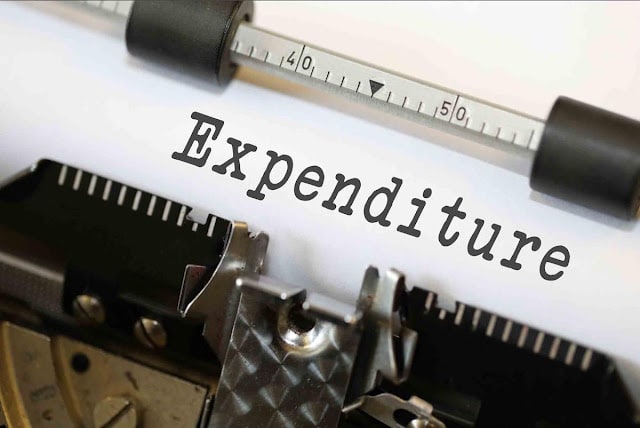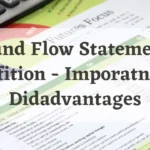The new government accounting system requires an operating level office to regularly report on expenditures to the concerned central level office. For this purpose, a number of reports are prepared in the form of statements and submitted to the concerned central-level office.
For this purpose, a number of reports are prepared in the form of statements that are submitted to the concerned central office. These reports or statements are generally prepared on a monthly basis. Among such statements, one important statement is the statement of expenditure or monthly expenditure report.
Definition of Statement Of Expenditure
A statement of expenditure is a financial document that provides a detailed record of all the expenses incurred by a business or organization during a specific period of time. It typically includes a breakdown of expenses by categories, such as salaries, rent, utilities, and supplies, and may also include information on the purpose of each expense and the method of payment.

Meaning of Statement of expenditure
Statement of expenditure is a multi-column self-balancing monthly statement of expenditures of an operating level office. It is prepared and submitted to the concerned central-level office at the end of every month as a monthly report. Therefore, it is also called a monthly expenditure report.
This statement shows a summary of the annual appropriation of the budget to the office with budget heads and their numbers, budget release up to the current month, the expenditure of the current month, total expenditure up to the current month, the balance of budget, unsettled advance amounts, cash and bank balances, and loan receivable and payable at the end of a month.
Importance of statement of expenditure
The statement of expenditure is an important statement, which is prepared by the operating level office to show its expenditure for the month. The following points explain the importance of a statement of expenditure:
- It helps to evaluate the progress of operating-level offices.
- It provides the necessary information to the central level offices for controlling budget expenditure.
- It provides information to the office of the treasury and comptroller for making a decision on the budget release and revolving fund.
- It provides information for making future budgets of operating-level offices
Read Important: Diminishing Method
Best Ways to Prepare Statement Of Expenditure
Preparing a statement of expenditure involves tracking and recording all the expenses incurred by a business during a specific period of time. Here are the steps to prepare an effective statement of expenditure:
1. Gather all the necessary information
Collect all receipts, invoices, bills, bank statements, and any other documents related to the expenses incurred during the period in question.
2. Categorize the expenses
Group the expenses into categories such as rent, utilities, supplies, salaries, and marketing expenses. This will help you identify the major areas of expenditure and analyze the spending patterns.
3. Record the expenses
Enter all the expenses in a spreadsheet or accounting software, assigning each expense to the appropriate category. Make sure to record the date of the expense, the amount paid, and the method of payment.
4. Reconcile accounts
Reconcile the accounts by comparing the expenses recorded in the statement of expenditure to the bank statements and other records. This will help you identify any errors or discrepancies and ensure accuracy.
5. Analyze the data
Review the statement of expenditure to identify trends, patterns, and areas of concern. Use this analysis to make informed decisions about future spending and budgeting.
6. Summarize the results
Summarize the data in the statement of expenditure into a concise report that highlights the major areas of expenditure and provides a clear picture of the business’s financial performance during the period in question.
7. Review and finalize
Review the report to ensure accuracy and completeness, and finalize the statement of expenditure for distribution to stakeholders such as investors, creditors, and management.
By following these steps, you can prepare a comprehensive and accurate statement of expenditure that provides valuable insights into your business’s financial performance and helps inform future decisions.
FAQs
What is a statement of expenditure?
A statement of expenditure is a financial document that tracks and records all the expenses incurred by a business during a specific period of time. It is used to monitor spending, identify areas of concern, and make informed decisions about budgeting and future spending.
What information is included in a statement of expenditure?
A statement of expenditure typically includes details of all expenses incurred during the period in question, categorized by type of expense. It may also include information on the purpose of each expense, the method of payment, and any relevant notes or comments.
Who uses a statement of expenditure?
A statement of expenditure is used by businesses of all sizes, as well as non-profit organizations, government agencies, and other entities that need to track their spending and manage their finances.
How is a statement of expenditure different from an income statement?
While a statement of expenditure tracks all the expenses incurred by a business, an income statement tracks all the revenue earned by a business during a specific period of time. Income statements are used to calculate the net income or profit of a business, while statements of expenditure are used to monitor spending and manage expenses.
How often should a statement of expenditure be prepared?
The frequency of preparing a statement of expenditure will vary depending on the needs of the business or organization. In general, it is recommended to prepare a statement of expenditure at least once a month, and more frequently if there is a need for more detailed tracking of expenses.
What are some benefits of preparing a statement of expenditure?
Preparing a statement of expenditure can help businesses identify areas of high spending, track changes in expenses over time, and make informed decisions about budgeting and future spending. It can also help improve financial management and provide transparency to stakeholders such as investors, creditors, and management.
More Important Topics For You




